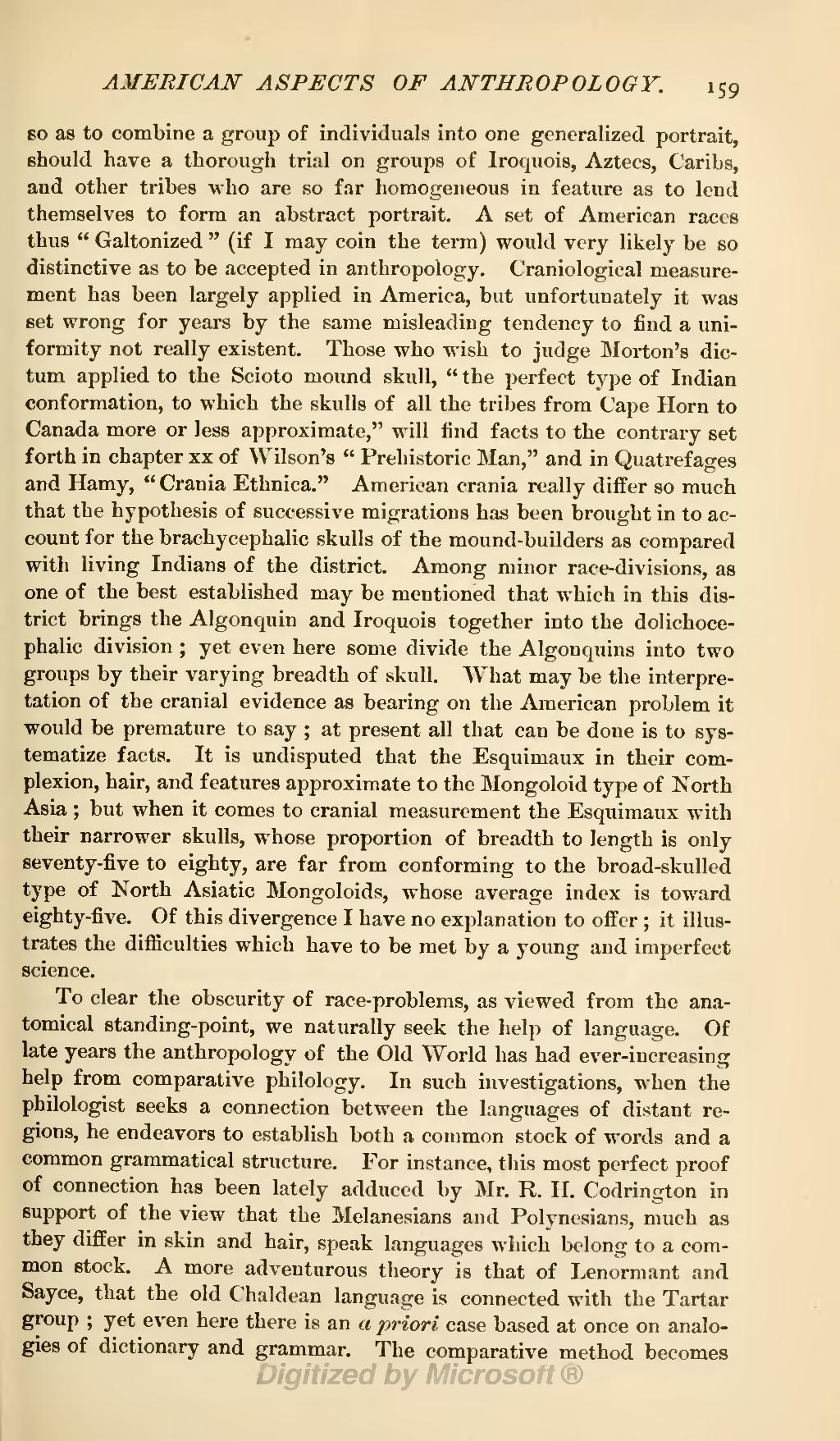so as to combine a group of individuals into one generalized portrait, should have a thorough trial on groups of Iroquois, Aztecs, Caribs, and other tribes who are so far homogeneous in feature as to lend themselves to form an abstract portrait. A set of American races thus "Galtonized" (if I may coin the term) would very likely be so distinctive as to be accepted in anthropology. Craniological measurement has been largely applied in America, but unfortunately it was set wrong for years by the same misleading tendency to find a uniformity not really existent. Those who wish to judge Morton's dictum applied to the Scioto mound skull, "the perfect type of Indian conformation, to which the skulls of all the tribes from Cape Horn to Canada more or less approximate," will find facts to the contrary set forth in chapter xx of Wilson's "Prehistoric Man," and in Quatrefages and Hamy, "Crania Ethnica." American crania really differ so much that the hypothesis of successive migrations has been brought in to account for the brachycephalic skulls of the mound-builders as compared with living Indians of the district. Among minor race-divisions, as one of the best established may be mentioned that which in this district brings the Algonquin and Iroquois together into the dolichocephalic division; yet even here some divide the Algonquins into two groups by their varying breadth of skull. What may be the interpretation of the cranial evidence as bearing on the American problem it would be premature to say; at present all that can be done is to systematize facts. It is undisputed that the Esquimaux in their complexion, hair, and features approximate to the Mongoloid type of North Asia; but when it comes to cranial measurement the Esquimaux with their narrower skulls, whose proportion of breadth to length is only seventy-five to eighty, are far from conforming to the broad-skulled type of North Asiatic Mongoloids, whose average index is toward eighty-five. Of this divergence I have no explanation to offer; it illustrates the difficulties which have to be met by a young and imperfect science.
To clear the obscurity of race-problems, as viewed from the anatomical standing-point, we naturally seek the help of language. Of late years the anthropology of the Old World has had ever-increasing help from comparative philology. In such investigations, when the philologist seeks a connection between the languages of distant regions, he endeavors to establish both a common stock of words and a common grammatical structure. For instance, this most perfect proof of connection has been lately adduced by Mr. R. H. Codrington in support of the view that the Melanesians and Polynesians, much as they differ in skin and hair, speak languages which belong to a common stock. A more adventurous theory is that of Lenormant and Sayce, that the old Chaldean language is connected with the Tartar group; yet even here there is an a priori case based at once on analogies of dictionary and grammar. The comparative method becomes

